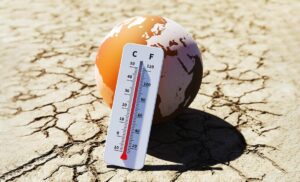 In a stark warning about the accelerating impacts of climate change, the World Meteorological Organization (WMO) has declared 2024 the hottest year ever recorded in the South-West Pacific region. Released on June 5, 2025, the State of the Climate in the South-West Pacific 2024 report paints a harrowing picture of widespread heat, destructive cyclones, marine heatwaves, and rising sea levels signaling urgent risks to ecosystems, economies, and communities across 21 nations.
In a stark warning about the accelerating impacts of climate change, the World Meteorological Organization (WMO) has declared 2024 the hottest year ever recorded in the South-West Pacific region. Released on June 5, 2025, the State of the Climate in the South-West Pacific 2024 report paints a harrowing picture of widespread heat, destructive cyclones, marine heatwaves, and rising sea levels signaling urgent risks to ecosystems, economies, and communities across 21 nations.
According to the WMO, the region which includes Australia, Indonesia, New Zealand, the Philippines, and numerous Pacific island nations saw land and ocean temperatures exceed all previous records, even surpassing the blistering heat of 2023. This record warmth was driven significantly by the 2023/24 El Niño event, whose effects lingered long after its official end, fueling temperature anomalies across the Pacific.
Brunei Darussalam, Singapore, and the Philippines each recorded their hottest year in history. In Western Australia, the February 2024 heatwave broke century-old records, with Carnarvon reaching a searing 49.9°C and Geraldton hitting 49.3°C. Emu Creek experienced four consecutive days above 48°C a first for any Australian site contributing to the hottest summer ever recorded across parts of the region.
But the crisis extended far beyond heat. The region oscillated between extreme droughts and catastrophic rainfall. Southern Australia, New Caledonia, and the Marshall Islands suffered some of their driest conditions in 30 years, while Malaysia, Indonesia, northern Australia, and Papua New Guinea were drenched by record rainfall. These climate shocks are attributed in part to the erratic behavior of the El Niño–Southern Oscillation and a warming planet.
Cyclone activity was also severe. The Philippines experienced a hyperactive late cyclone season, with 12 named storms between September and November double the typical average. Cyclones Trami, Kong-rey, Toraji, Usagi, and Man-yi left behind an estimated $430 million in damages, further stressing infrastructure and disaster response systems.
Meanwhile, oceanic temperatures surged to all-time highs. The average sea surface temperature in the region reached record levels, with marine heatwaves affecting 40 million square kilometers more than 10% of global ocean surface. This surpasses the extent of previous worst events recorded in 2023 and 2016, posing dire consequences for coral reefs, fish stocks, and coastal economies.
The consequences were particularly acute in glacier regions. Western New Guinea and Indonesia saw glaciers retreat by 30–50% between April 2022 and August 2024. If the current rate continues, the region may lose its remaining tropical glaciers as early as 2026, eliminating a vital water source and scientific marker of climate change.
Sea level rise continues to accelerate across the region, with rates in the South-West Pacific outpacing the global average of 3.5 mm per year between 1993 and 2024. In Fiji’s Serua Province, the rising ocean has breached seawalls, inundated homes, destroyed crops, and displaced communities. “Sea-level rise is an existential threat to entire island nations,” said WMO Secretary-General Celeste Saulo, underscoring the urgency of coordinated global action.
Despite these grim findings, the report also spotlights resilience. It highlights successful community-based adaptation initiatives, such as anticipatory action programs in the Philippines, which have helped protect lives and cultural heritage through early warning systems and local engagement.
The 2024 edition marks the fifth annual WMO report on the region’s climate, each one reinforcing the Pacific’s acute vulnerability to climate extremes. The report calls for immediate investments in climate resilience, especially in improved forecasting, risk communication, and cross-border disaster response systems.
As the world grapples with record-breaking heatwaves and weather extremes, the South-West Pacific stands as a frontline region where the impacts of climate change are no longer abstract predictions but a lived and escalating reality.
